People Monitoring
NEMO being an abbreviation of Nearshore Monitoring and Modelling, it isn't very surprising that we invest quite a bit in monitoring equipment. NEMO intends to provide a full insight in Large Scale and Long Term coastal behavior and therefore needs to fill in many gaps in current knowledge. Amongst others, this is done be extensive measurements and the development of new techniques.
A selection of the techniques used in NEMO are:
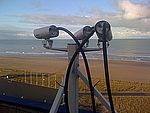 | ArgusRegular CCD cameras are used to continuously monitor the coast. From these images, bathymetries and currents can be estimated. The image will also be used for further (statistical) analysis on features like Aeolian activity and supply limiting factors. |
 | Infra-red camerasThe Argus stations will be extended with infra-red cameras. These cameras can measure the drying of the inter-tidal area and other supply limiting factors for Aeolian transport. This technique is still in development. |
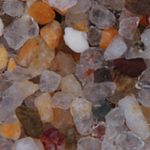 | Grain-size camerasGrain size measurements are an important aspect of research to the surfzone, beach and dunes. However, grain size measurements by sieving is a very time-consuming job. Therefore, regular DSLR cameras (with underwater housing) are used to obtain images from the sand surface. Image analysis techniques are used to estimate grain size parameters from these images. |
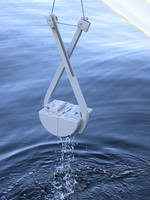 | Sediment grab samplingThe properties of the coastal sediment can have a significant influence on coastal evolution. A very common method to assess these properties is to make sieve curves of sediment. It is easy to sample the sediment at the dry beach. In the surfzone, this is more difficult and requires a 'Van Veen grabber'. This device can be lowered from a boat. |
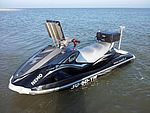 | Jetski bathymetry measurementsA jetski equipped with GPS and echo sounders can make detailled bathymetry measurements also in shallow water. |
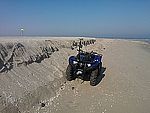 | Quad topographic measurementsA quad equipped with GPS can be used to efficiently make topographic measurements. |
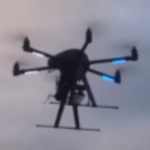 | Multicopter Aerial imagesIt can hover, follow GPS paths, etc. We can use it to monitor currents, vegetation, etc. And possible for stereo imagery to obtain 3D topographies of the beach, dunes and intertidal area. |
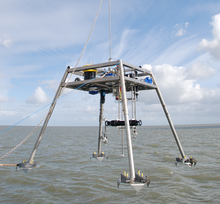 | Measurement rigsMeasurement rigs will be used to investigate processes that thrive morphological evolution on the lower foreshore. The rigs will be equiped with state-of-art equipment that can measure the velocities of the currents over the full water column as well as turblence at specific points. Furthermore, devices will be deployed that can assess temperature, conductivity, sediment concentrations (turbidity) and the sediment grading. These measurements will be essential for understanding the sediment transport processes in the water column and near the bed. Typically, these devices can be deployed for a couple of weeks. |
 | DriftersDrifters are floating devices that can be used to assess the flow patterns at the coast. They can for example be applied for the assessment of the impact of rip currents on swimmers. |